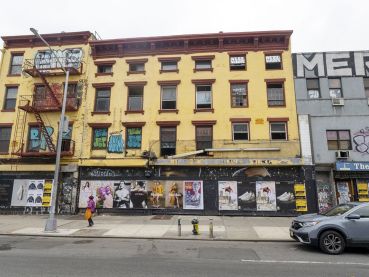Environmentalists Argue Carbon Credit Rule Creates Big Loophole for NYC Emissions Law
By Rebecca Baird-Remba December 30, 2022 4:20 pm
reprints
Local environmental groups criticized Mayor Eric Adams for a new rule that will allow New York City landlords to skirt upcoming environmental regulations for buildings by purchasing large quantities of carbon credits.
Last week, the New York City Department of Buildings issued a final version of a long-anticipated carbon credit policy—a key part of the city’s 2019 carbon emissions law for buildings, Local Law 97— that would allow property owners who cannot meet the law’s strict emissions standards through renovations to purchase carbon credits instead. Landlords would be allowed to buy renewable energy credits, or RECs, to offset all pollution generated by a building’s electricity use.
Environmental activists charge that the rule as written gives landlords far too much leeway, allowing them to buy their way out of regulations designed to force buildings to install energy efficiency features and reduce their use of electricity and natural gas. They also point to a recent analysis by nonprofit Urban Green Council that found half of the proposed pollution cuts — achieved through building renovations — would not happen with the current REC policy in place.
“As it currently stands, the REC limit the city adopted by rule last week — which only limits REC purchases to pollution generated from electricity use — is far too-lax,” said the environmental groups — Food & Water Watch, New York Communities for Change, NYPIRG and Treeage — in a joint statement. “Mayor Adams must not create a giant loophole in the law that would allow building owners to ‘buy out’ from the law’s requirements to slash climate-heating pollution.”
And the advisory board charged with helping the city draft regulations for Local Law 97 appears to agree with them. The group, which includes climate activists, landlords, engineers, architects, union officials, housing attorneys and environmental policy experts, released a report Thursday that laid out a long list of recommendations to implement the landmark environmental law. The report included capping the amount of RECs an owner could buy at 30 percent of the building’s excess emissions.
During a hearing on the proposed REC policy in November, lawmakers including Councilmember Lincoln Restler and Comptroller Brad Lander also called for a 30 percent cap to prevent landlords from buying their way out of compliance.
“Many of the recommendations in the report have already been incorporated in our first agency Rule for Local Law 97, and we are carefully considering the other recommendations as we continue to implement the law,” DOB spokesperson Andrew Rudansky said in a statement. “As we have said before, we agree that limits on RECS are needed, and we are currently working with our partners at NYSERDA to study the issue.”
Since Adams took office, environmental advocates feared that the new mayor and his real-estate friendly officials would water down Local Law 97 — which would force building owners to dramatically reduce their energy consumption beginning in 2024 — and its penalties, resulting in fewer greenhouse gas reduction in the long-term. The Adams administration has claimed that it wanted to enforce it and “supports the goals” of the law.
The state, meanwhile, needs the funds generated by selling RECs to subsidize the construction of wind and solar projects, which will help decarbonize New York’s grid. So the Adams administration has to figure out how to thread the needle between forcing landlords to reduce their energy usage and ensuring that the city allows enough carbon credits.
Rebecca Baird-Remba can be reached at rbairdremba@commercialobserver.com.


